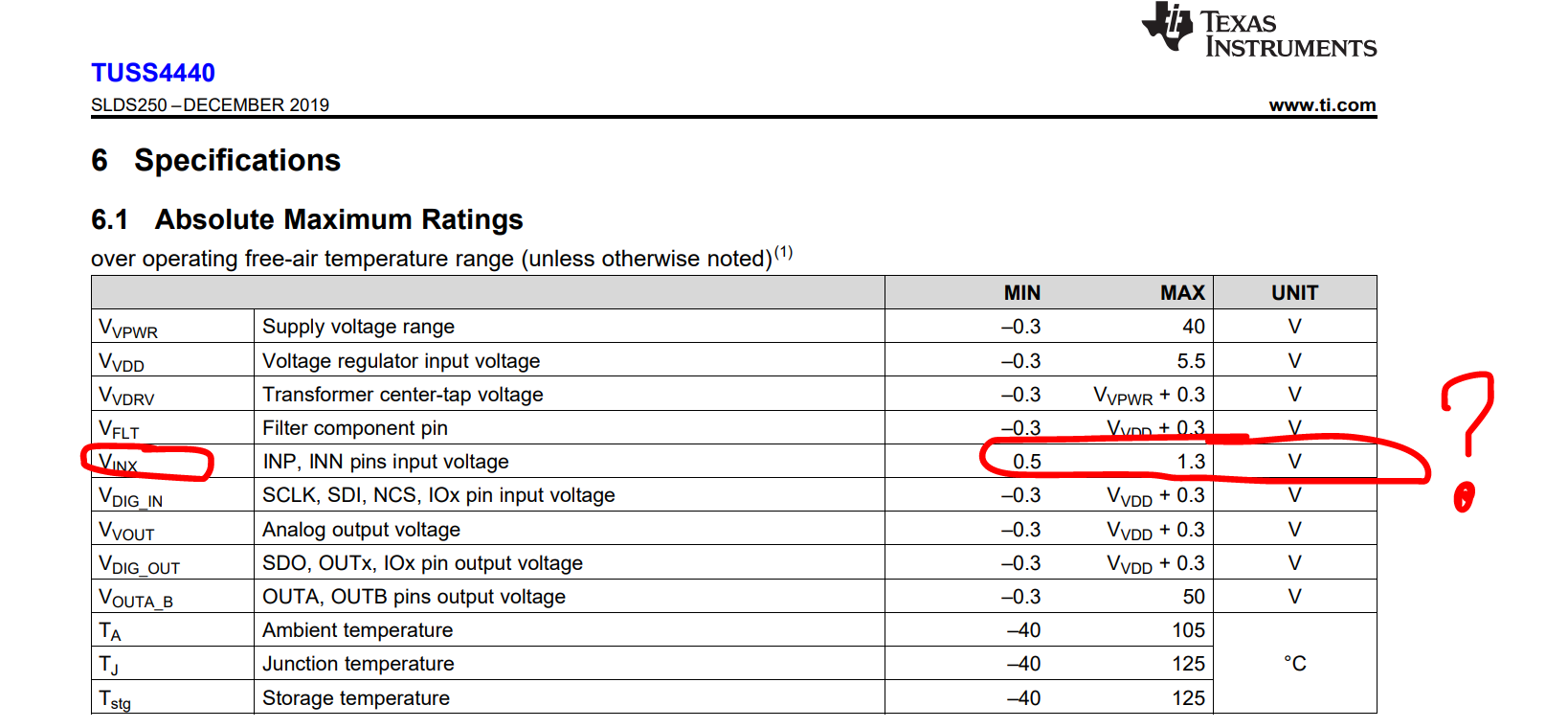Hello
I am evaluating the TUSS4470 chip, I am using it with a transformer and have voltages in the magnitude of +-200V at transformer secondary winding output. The schematics is similar to TI's eval kit.
In the Eval kit Vinp is connected with the transformer via R=330pF and R=200ohm in series.
At the same time the TUSS4470 datasheet limits Vinp range to 0.5 - 1.5 V in the absolute maximum ratings.
In reality given that there is +-200V on the transformer output, it feels like built in protection diodes taking all the beating in the TUSS4470, voltage on Vinp is -diode drop to Vdd+diode drop, and the current reaches 50 mA. That feels like a little too much for the built protection diodes to me, even though it is just several pulses and the diodes somehow manage not to evaporate.
So what is the actual Vinp input current and voltage maximum capability ? Do I need to use extra protection? Any guidance from TI ?
Input impedance of the Vinp input will also be good to know!
Thanks
Dmitry



